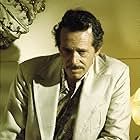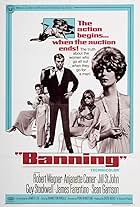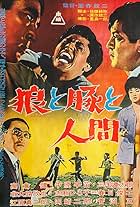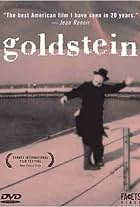In 1896, three survivors of a whaling ship-wreck in the Canadian Arctic are saved and adopted by an Eskimo tribe but frictions arise when the three start misbehaving.In 1896, three survivors of a whaling ship-wreck in the Canadian Arctic are saved and adopted by an Eskimo tribe but frictions arise when the three start misbehaving.In 1896, three survivors of a whaling ship-wreck in the Canadian Arctic are saved and adopted by an Eskimo tribe but frictions arise when the three start misbehaving.
Louis Gossett Jr.
- Portagee
- (as Lou Gossett)
Storyline
Did you know
- TriviaAccording to producer Irwin Winkler, this movie was the main factor in his decision to invite director Philip Kaufman to direct The Right Stuff (1983). Portions of Henry Mancini's score for this film can be heard in the later film.
- Alternate versionsThe film was originally given an "R" rating from the MPAA due to the nudity which was then edited for the film to receive a "PG" rating.
- ConnectionsReferenced in Realizing 'the Right Stuff' (2003)
Featured review
Full disclosure I only watched this film because I admire Warren Oates and I had recently watched The Paper Chase and enjoyed Timothy Bottoms in that movie. I had only a vague notion of the theme of White Dawn and checked it out from my local library.
To begin I disapprove of seeing this film as good vs bad or savage vs civilized. I see far too many summaries of this film through that lens. The story, evidently, based on real events and was subject of a novel of the same name White Dawn, tells of four men who were part of an American whaling vessel in the Baffin Bay and while on a whale hunt are wrecked and stranded on the Baffin Island. The ship thinking those men dead turn about and sail home. One of the four stranded men died early on and we know nothing of him. The three remaining men struggle across the frozen barren until fortuitously they are discovered by some Inuits. The men are taken in and fed and provided shelter. Over time the men are initially given respect and are given wives, although Oates character is a devious man who wins his wives in a game. Naturally there are cultural misunderstandings and this eventually turns to friction. The Inuits are occasionally visited by a shaman who warns the tribe the newcomers are trouble. Somewhat a slow film but it builds to a tragic end.
The film is beautifully shot. We see a seal and walrus hunt and it appears to give an authentic look at Inuit life. I say appears because I am no authority on the Inuits, but the author of the novel, James Houston, on which the film was based lived with the Inuits to learn their ways, so I am trusting his observations. We see the Inuit life is hard and simple. It alludes the Inuits occasionally suffer from starvation. The film was shot on location where the events happened. You get a sense of the isolation of the place.
Overall I enjoyed the film, mainly because I was fascinated with a look at a people oftentimes forgotten and of the location which is isolated and formidable. Oates, Gossett and Bottoms deliver great performances.
To begin I disapprove of seeing this film as good vs bad or savage vs civilized. I see far too many summaries of this film through that lens. The story, evidently, based on real events and was subject of a novel of the same name White Dawn, tells of four men who were part of an American whaling vessel in the Baffin Bay and while on a whale hunt are wrecked and stranded on the Baffin Island. The ship thinking those men dead turn about and sail home. One of the four stranded men died early on and we know nothing of him. The three remaining men struggle across the frozen barren until fortuitously they are discovered by some Inuits. The men are taken in and fed and provided shelter. Over time the men are initially given respect and are given wives, although Oates character is a devious man who wins his wives in a game. Naturally there are cultural misunderstandings and this eventually turns to friction. The Inuits are occasionally visited by a shaman who warns the tribe the newcomers are trouble. Somewhat a slow film but it builds to a tragic end.
The film is beautifully shot. We see a seal and walrus hunt and it appears to give an authentic look at Inuit life. I say appears because I am no authority on the Inuits, but the author of the novel, James Houston, on which the film was based lived with the Inuits to learn their ways, so I am trusting his observations. We see the Inuit life is hard and simple. It alludes the Inuits occasionally suffer from starvation. The film was shot on location where the events happened. You get a sense of the isolation of the place.
Overall I enjoyed the film, mainly because I was fascinated with a look at a people oftentimes forgotten and of the location which is isolated and formidable. Oates, Gossett and Bottoms deliver great performances.
- brileyvandyke
- Sep 1, 2023
- Permalink
- How long is The White Dawn?Powered by Alexa
Details
Box office
- Budget
- $1,700,000 (estimated)
Contribute to this page
Suggest an edit or add missing content
























